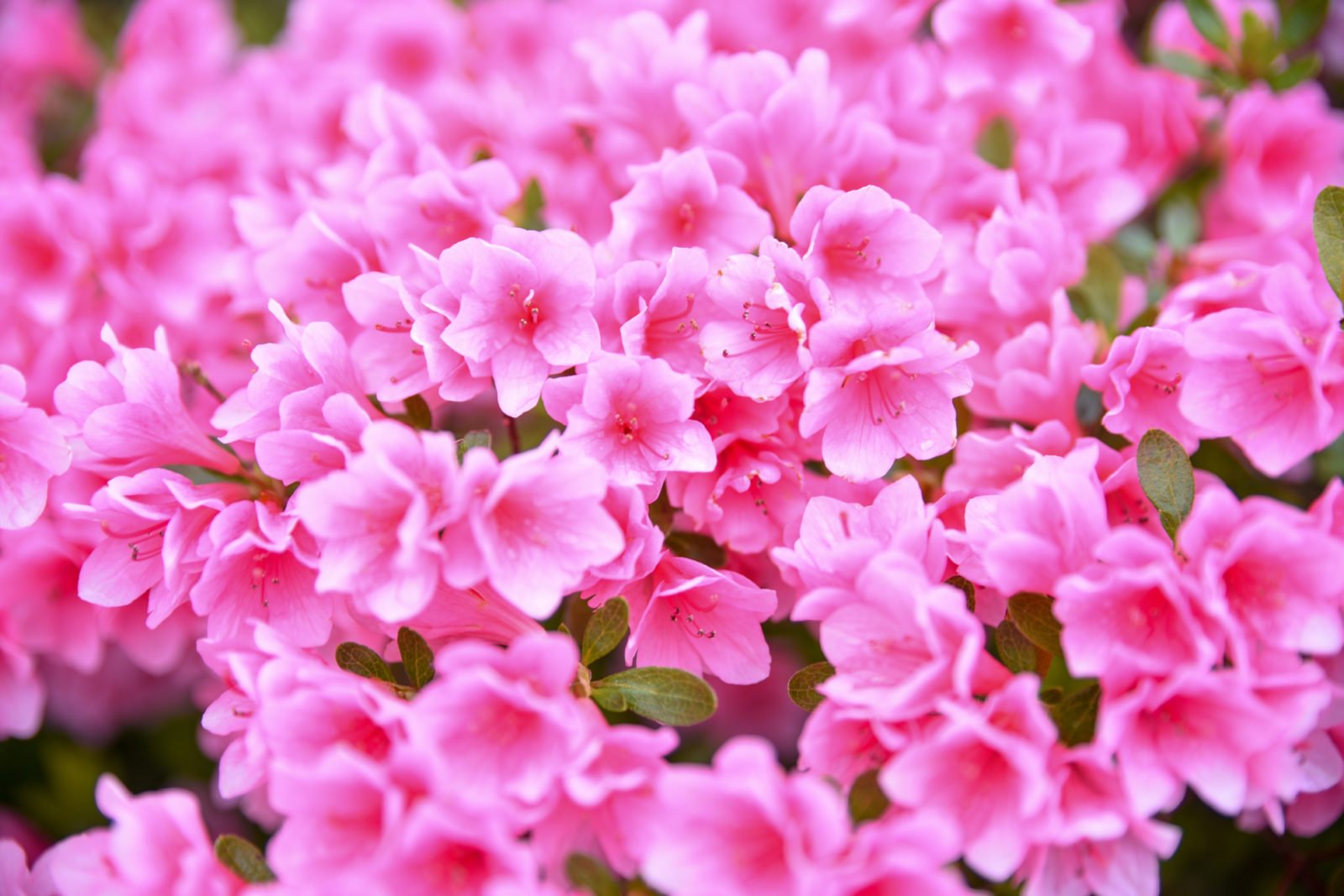Table of Contents
Azaleas – one of the most reliable flowering and lasting lives benefitting the gardens only when they are planted right. When azaleas are planted wrong, a lot of serious issues can pop up. So, the question arises when is the best time to move Azaleas in the UK?
If you are in need to transplant azalea for any reason, fortunately, it is quite an easy task. However, you must be really caring and attentive during the entire transplanting.
When should you plan to transplant the azalea without any damage? What should be the perfect new location for a transplant? What care to shower with the new transplant? There can be a lot more thoughts in your head!
Don’t worry! We have got you covered with every detail you need to transplant azaleas. Read along to explore.
Is it Possible to Move an Established Azalea to a New Place?
Talking about the first things first, is it actually possible to move an established and fully grown azalea to a new place?
Thankfully, yes, it is possible to transplant an established azalea without any major hassles. Moreover, many experts suggest transplanting an azalea is better if it is not flourishing at its original place.
However, as you plan when is the best time to move Azalea, be sure of its type. The deciduous azaleas are a little more complicated to transplant than the evergreen azaleas because of their more spread roots. It can be challenging to dig them up for their fine transplant.
Important – The only time you have to drop the idea of transplanting your azalea is when its roots are intertwined with the nearby plants. You surely don’t want to disturb your other plants during the transplant, isn’t it? In such a case, it is suggested to propagate the azalea rather than transplanting it to a new location.
When is the Ideal Time to Move Azalea in The Uk?
When you are planning to transplant azalea, it is important to be very particular about the time. If the azalea is transplanted at the wrong time, there are lesser chances for it to blossom to its fullest.
Ideally, the most suitable time to transplant an azalea majorly depends on your climatic conditions. Autumn, i.e., between October and March, is usually considered the best time for transplanting azaleas.
Important – Avoid transplanting your azalea during the hottest summer months and coldest winter months. It can be really hard for azaleas to flourish and blossom under such extreme weather conditions.
Thus, for really hot climatic conditions, it is better to transplant azalea during the falls. On the other hand, if you have freezing cold climatic conditions, plan to transplant the azalea before the spring growth starts. Additionally, azaleas should be transplanted in the cool morning time as the afternoons can dry the roots.
Have You Chosen the Perfect Location for Transplanting Your Azalea?
So, do you think you are all prepared to transplant your azalea? But have you chosen the right location to ensure a successful transplant?
Before you plan further with transplanting your azalea, make sure you have just the right place. Always remember; transplanting your azalea to the wrong place can do maximum damage to its growth and flourishing.
To keep your azalea happy and low maintenance, it is extremely important to transplant it in the right location.
Here are some of the locations that you can rely on.
1. Acidic Soil
Azalea grows beautifully in acidic soil. So, if the chosen place doesn’t have naturally acidic soil, you should create it. To ensure the healthy growth of your azalea, the pH level of the soil should be between 4.5 and 6. Else azaleas will grow yellow leaves and will not thrive.
2. Well-Drained Soil
Azaleas grow beautifully in well-drained, moist soil; anything other than this will not support the desired growth. Make sure that the soil in which you are transplanting the azalea contains enough organic matter.
3. Part Sunlight
Similar to other plants, even azalea needs sunlight to bloom to its fullest. However, azaleas cannot tolerate extreme or full sunlight. It is best to shade or dapple the sunlight throughout the entire day for the best results.
You cannot just simply transplant the azalea to anywhere you want. Paying attention to the needed soil conditions is really an important need for azaleas to grow naturally and live longer, so before you decide on when is the best time to move Azalea, invest some time searching for the best soil for transplanting them.
How To Transplant Azalea
Now, surely is the right time to explore detailed insights about transplanting the azalea. Once you are well prepared with the essentialities before the transplant, the entire process can be done very easily.
Be very confident in choosing the right location, the azalea type, and about when is the best time to move Azalea to avoid any complications. You don’t want to dig up your azalea and not be sure of what to do next, isn’t it?
Let us take you through the detailed process of transplanting the azalea for the best bloom.
Things You Will Need
- A sharp spade or a nursery spade
- A piece of clean fabric to wrap the root balls of azalea
- A wheelbarrow if your azalea is too heavy to carry. You can obviously ask for a helping hand from your friends
- Mulch
- Pruners for large and well-established azalea
Steps to Transplant Azalea
As soon as you have all the supplies lined up with the perfect location chosen, it is time actually to proceed with the process. Here are the steps that you should follow to transplant your azalea seamlessly:
1. Start with Preparing the New Planting Hole
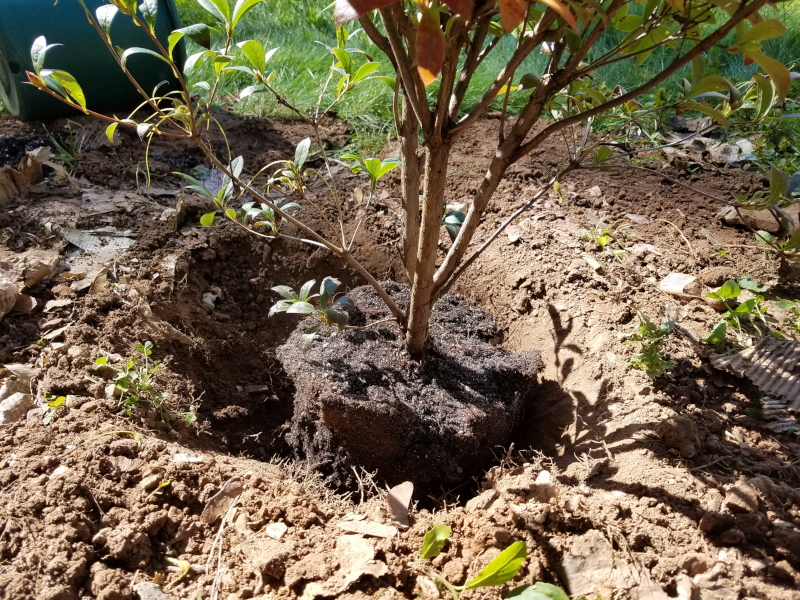
Azaleas can easily dry out if they are not planted as soon as you dig them out. Therefore, it is essential to have the new planting hole all ready for the transplant.
When digging the new hole for transplant, make sure it is of the same depth as the previous one but twice in width. You need enough space for the azalea’s roots to settle easily without damaging them. Moreover, if the soil isn’t prepared, you can use the amendments.
2. Dig the Azalea Out
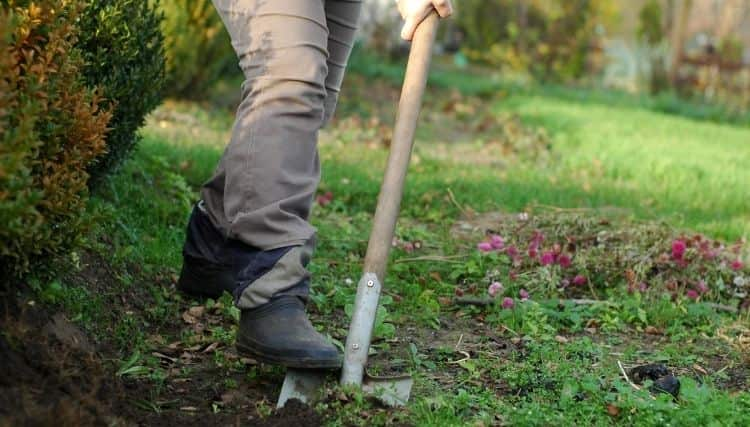
After the new transplant hole is all prepared, you can now move to dig the azalea out of the existing one. You have to be attentive to dig the entire azalea with all its roots without any breaking or damage.
Generally, the azalea’s roots are not that deep; they are maybe a foot or even lesser. Thus, to ensure that you are digging right, start to dig down to a foot and then proceed further, depending on the observation. You can take the route where the azalea’s roots are spread.
Yes, it will take time, especially with the big and established azaleas; but all good things are worth the invested time. As it is one of the most important steps, we suggest avoiding any rush to dig out the entire azalea.
3. Wrap the Roots
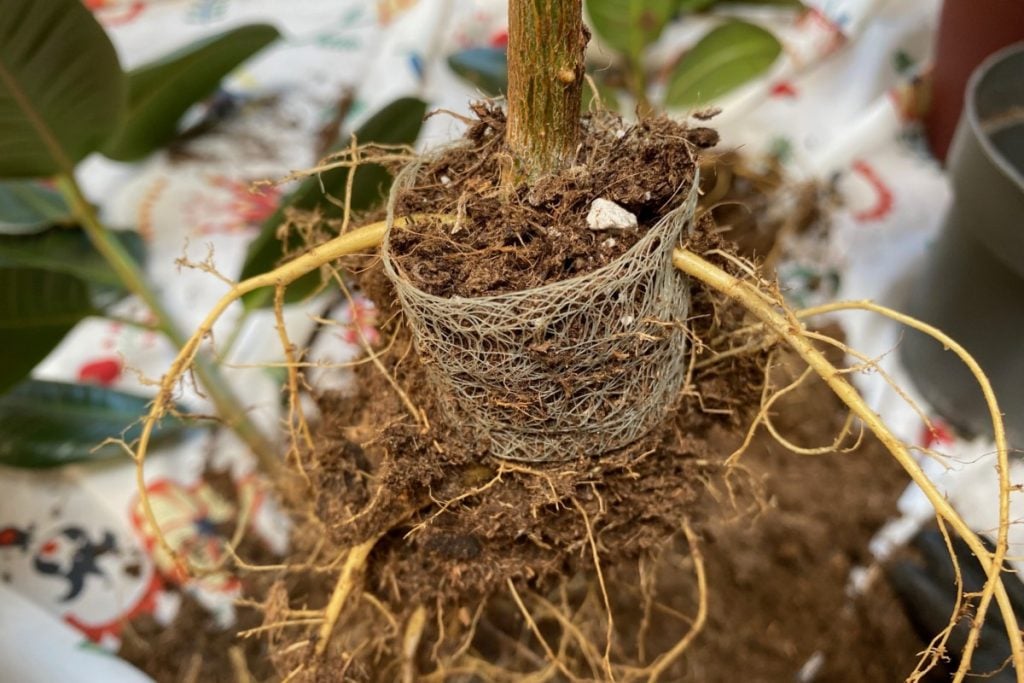
This step is optional but is recommended.
Once the azalea’s roots are loosening in the soil, use any fabric (burlap, old sheet, towel, etc.) to wrap them. Elegantly place the fabric underneath the roots by gently moving them roots back and forth. Tie the fabric top, using a string, for wrapping the roots.
There is no harm if you simply skip the step; however, following it will minimize the damage. Wrapping the azalea’s roots helps in holding the soil in the roots for a longer time, thus, preventing the roots from drying outs soon. Also, you should be gentle while handling and wrapping the roots; avoid using too much pressure.
4. Transfer the Azalea
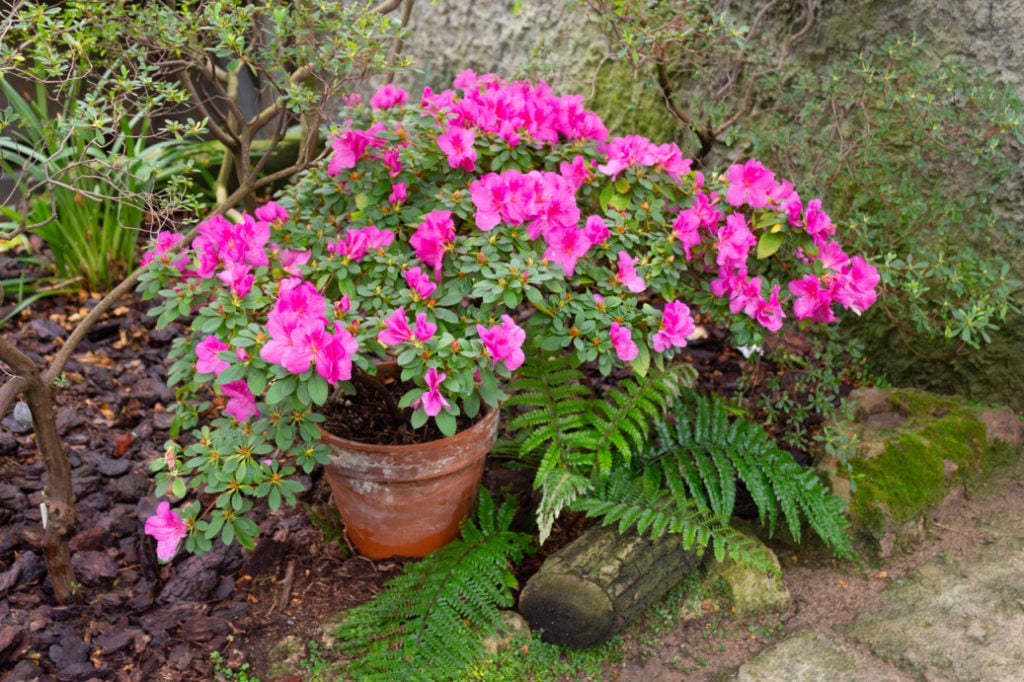
Now, lift the azalea with the root balls. You can use your shovel to leverage it out of the existing hole easily. Again, be gentle as you move the azalea to the new location. Pay keen attention to avoid any damage.
5. Plant and Mulch
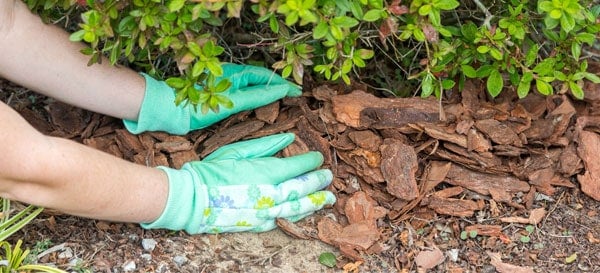
As you are all set to plant the azalea, remove the fabric from the root balls. Now, be gentle and place the azalea in the new hole considering any preferred direction. Once done, fill the surroundings with soil and with about halfway water to settle the soil without any air bubbles.
Finally, use a mulch to cover the soil and thoroughly water the azalea. For the initial few weeks, make sure to water the azalea every couple of days to avoid drying it out.
6. Prune the Azalea
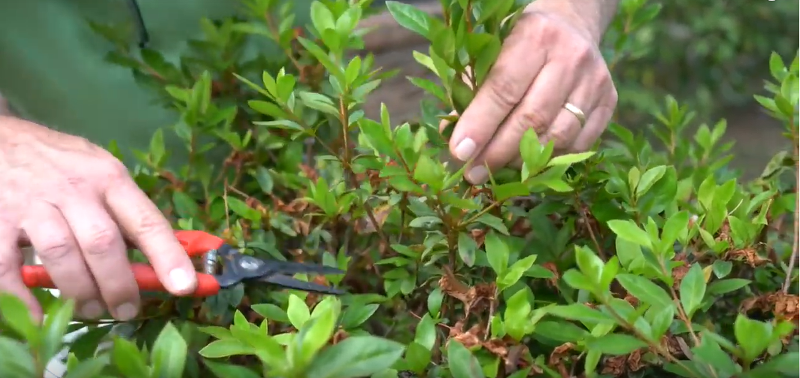
Lastly, if you had to cut several roots of azalea, you should prune them. If your azalea is well-established, a weak or small root system won’t provide enough support. However, you don’t have to be so dramatic as you prune the azalea.
For better understanding, if you have cut 50% of azalea’s roots, you should also reduce its branches to 50% for support and balance.
These are the steps that should be followed to seamlessly transplant the azalea from its old hole to a new one. When your azalea is getting everything it needs, it will respond very quickly to the new location in a more favourable way.
To Conclude
We hope you are now well aware of when is the best time to move Azaleas. Honestly, it is not about the right time, except for extreme summer and winter months, but the right procedure. When you are following the right steps, transplanting your azalea will be quick and hassle-free.
Once you are done with transplanting the azalea, make sure to water it regularly, along with thorough watering once a week. Also, avoid keeping the surrounding soil wet at all times as it prevents the air from reaching the roots, resulting in them rotting.
For more details, reach us in the comments.
Frequently Asked Questions
Does Azalea Bloom After Its Transplant?
The transplantation of azalea generally doesn’t interfere with its blooming and flourishing. However, it is important to correctly transplant the azalea with proper care, love, and attention.
Is it Important to Consider Any Right Time Before Transplanting the Azalea?
Yes, it is important to be informed about when is the best time to move Azaleasbefore transplanting it. If not done during the right time, your azalea will take longer to grow, blossom and flourish.
What Should Be Expected After the Azalea Transplant?
Just with Some Extra Care, Attention, and Love, Your Transplanted Azalea Will Be as Beautiful as a New One. However, You Should Keep a Closer Eye until The Roots Are Well Established After the Transplant. Once the Roots Are Well Settled, There Are Lesser or No Chances of Any Damage.
When and How to Water the Azalea?
Similar to knowing when is the best time to move Azaleas, it is important to know the right time to water them. It is best to water it in the morning so the leaves can easily dry before the evening time.
Make sure to water the soil and not its leaves to prevent any risks of damage. Also, an azalea doesn’t need much watering in the winter months, so be attentive to the quantity.

